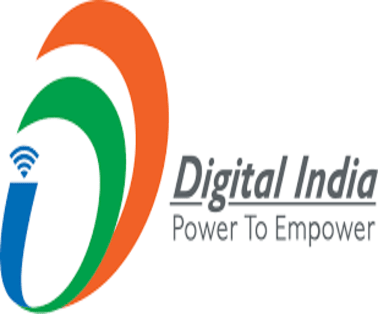Prime Minister Narendra Modi recently applauded the Digital India programme, marking the successful completion of its nine transformative years. Calling it a symbol of an empowered and transparent India, he emphasized its role in improving ease of living for citizens across the country.
What is Digital India?
Digital India is a flagship programme launched on July 1, 2015, by the Government of India. It aims to transform India into a digitally empowered society and a knowledge economy.
This visionary initiative brings together multiple sectors and ministries under one umbrella to ensure digital access, digital inclusion, and digital empowerment for every citizen.
Objectives of Digital India
- Bridge the Digital Divide: Reduce the gap between digitally connected and digitally excluded communities, especially in rural areas.
- Promote Equitable Access: Ensure that digital services reach every citizen in fields like education, healthcare, and public administration.
- Drive Economic Growth: Use digital tools and platforms to create jobs, stimulate entrepreneurship, and grow digital infrastructure.
- Improve Quality of Life: Integrate technology into everyday services to improve living standards.
Nine Pillars of Digital India
The Digital India mission is structured around nine core pillars, ensuring comprehensive development and integration:
- Broadband Highways
- Universal Access to Mobile Connectivity
- Public Internet Access Programme
- e-Governance: Reforming Government through Technology
- e-Kranti: Electronic Delivery of Services
- Information for All
- Electronics Manufacturing: Net Zero Imports Target
- IT for Jobs
- Early Harvest Programmes
Key Digital India Initiatives
Identity & Access
- Aadhaar: Biometric-based 12-digit unique identity for all residents.
- MeriPehchaan: National Single Sign-On platform for accessing multiple government portals with one login.
- DigiLocker: Secure cloud-based platform for storing and accessing documents online.
Governance & Services
- UMANG App: Unified platform to access over 1,200 government services on mobile.
- e-Sign: Enables secure and legally accepted electronic document signing.
- MyGov: Citizen engagement platform for participatory governance.
- eDistrict MMP: Delivering high-volume, citizen-centric services at the district level.
Health & Welfare
- eHospital/ORS: Online system for hospital registrations and medical services.
- CO-WIN: Platform for COVID-19 vaccination registration and certification.
- Jeevan Pramaan: Digital life certificate platform for pensioners.
Agriculture & Payments
- e-NAM: Online trading platform connecting agricultural markets.
- UPI & BHIM: India’s flagship digital payment systems enabling fast, secure peer-to-peer payments.
Open Data & Connectivity
- Open Government Data Platform: Encourages transparency and innovation via open access to non-personal data.
- National Knowledge Network: High-speed data network linking educational and research institutions.
- NCOG-GIS: Geo-informatics platform for spatial analysis and inter-departmental collaboration.
Advantages of the Digital India Programme
- Enhanced Transparency: Direct transfer of services and subsidies minimizes corruption.
- Wider Reach: Empowers rural populations with access to digital services.
- Boosted Resilience: Proved critical during the COVID-19 pandemic in delivering health and welfare services.
- Reduced Bureaucratic Gaps: Connects government and citizens through e-Governance tools.
- Promotes Innovation: Fosters a startup ecosystem driven by digital entrepreneurship.
Challenges and Limitations of Digital India
Despite its success, Digital India still faces significant hurdles:
- Digital Divide: Around 50% of India’s population remains offline, especially in rural areas.
- One-size-fits-all Model: Lack of customization for regional, linguistic, and demographic diversity.
- Uneven Digital Literacy: Shortage of trainers, vernacular content, and monitoring reduces programme effectiveness.
- Affordability Issues: High costs of smartphones, laptops, and data plans exclude many from sustained access.
- Infrastructure Gaps: Poor electricity and connectivity in remote regions slow digital adoption.
Conclusion: A Digital Future for Every Indian
Digital India stands as a cornerstone of India’s digital transformation journey. With focused implementation, it has redefined governance, citizen engagement, and service delivery. As India advances into a digital-first economy, addressing remaining challenges will be key to realizing the vision of Digital India for all.
To Download Monthly Current Affairs PDF Click here
Click here to get a free demo
Discover all about CLAT Exam



